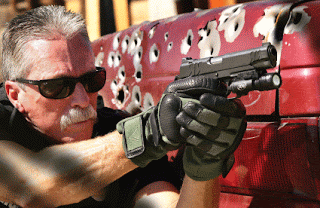MAN ALIVE
THE BRIEF
To create a production concept package for a new American satirical drama, “Man Alive”
“Man Alive” Is a 10-part mini-series for TV channel AMC.
Tagline
“1 Prison, 421 Cameras. To survive he needs your votes”
SYNOPSIS
Ethan Harper is a dead man walking. The LAPD officer has been framed for the murder of James McCarthy, his partner. Now serving time on Death Row in the notorious COLDMARSH prison, Harper must find a way out to save his family. Only one thing is stopping him, 300 million viewers.
SERIES 1
The Network, a global media corporation now controls the Prison System in the United States after a successful bid when the country was declared bankrupt. At a time where online and computer hacking has consumed peoples lives, The Network does not fight for justice, it fights for ratings.
Ethan Harper, a young successful LAPD officer has been caught in a game of cat and mouse after uncovering disturbing corruption among the force. After incarceration his only way out it to take part in the annual LOCKDOWN games. With the CEO of the Network running for presidency, interests in the Middle East demanding televised blood shed, corrupt officials running the justice system and a public addiction to social networking, “MAN ALIVE” looks at the dark side of a technology dependent America in ruins.
ROLES & RESPONSIBILITIES
LAUREN HOWARD
Producer/Writer
Show reasoning behind the decision made for scheduling and broadcaster
choice. With thorough research on the Network AMC and a study into their
programming remit, paying particular attention to “The Walking Dead” and
“Breaking Bad”; and showing how “Man Alive” would fit within their remit.
To write a pilot script of the opening episode of “Man Alive”. With detailed
research into existing scripts for American television series.
To write the full synopsis for the 10-part mini-series and provide a treatment
for each episode.
To write the main character biographies in detail and make relevant casting
choices.
To oversee marketing strategies and content, online content, branding
content and sponsorship decisions.
LAUREN WOODFALL
Producer/Production Design/Branding
To create a distinctive brand for “Man Alive”, showing thought processes,
initial designs and ideas, and reasoning behind each choice made.
To create the title sequence, with research into the companies which
provide title sequences. Initial storyboards will be made with test shoots.
To explore marketing techniques used by AMC programmes and apply this
research to our own brand. A mock-up website page for our programme on
AMC’s website, innovative new ways of pushing our brand through extra
content such as applications for iPhones and iPads. To generate ideas for
viral marketing campaigns and interesting promotional techniques for
posters, billboards and digital banners.
Creating the visual style, by using mood boards, test shoots, creating
“looks” in editing.
Storyboarding key scenes within the pilot episode.
PACKAGE COMPONENTS
A full pilot episode script
.
AMC channel research and programming remit
.
Schedule showing “Man Alive’s” placement
.
Synopsis for the 10-part mini series, with a treatment for each episode in case files
.
Full Character Bio’s and appropriate casting in the form of wanted posters
.
A DVD of the opening title sequence
.
Visual style mood board
.
A DVD with test shoots
.
Storyboards for key scenes within the pilot episode
.
Final branded logo design
.
Initial ideas and research into branding for American programming
.
Mock up design of AMC branded website page for “Man Alive”
.
Mock application ideas for use on tablet devices and smart phones
.
Viral marketing potential ideas
.
Poster, billboard & digital banner designs and initial ideas
.

























